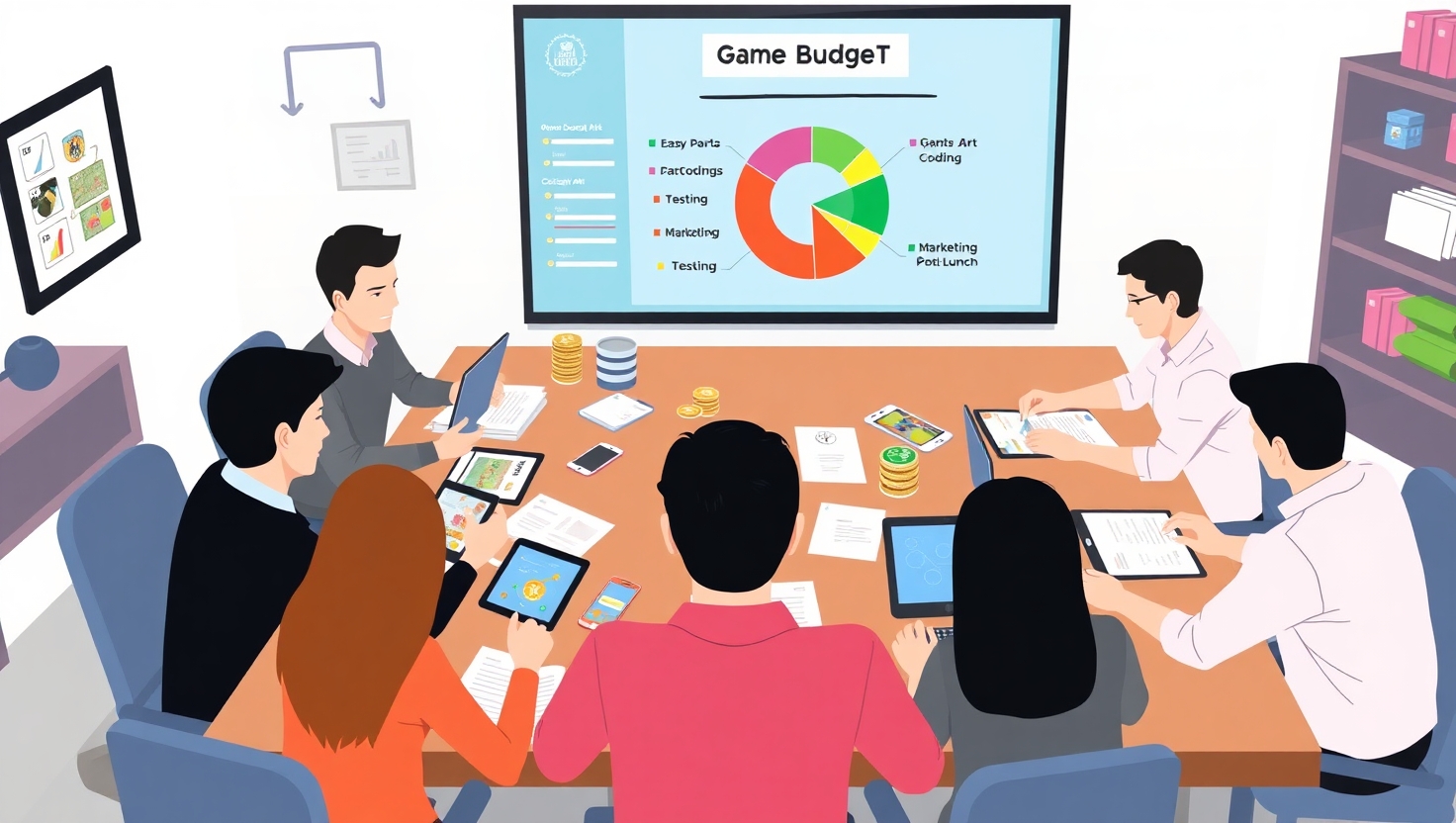
If you’re thinking about developing a mobile game, you’re probably asking one big question first: “How much will it cost?” To understand the answer to this question, you need to analyze in detail what is included in the game development budget.
Great games don’t happen by accident—they happen by smart planning.
At Melior Games, we’ve worked with hundreds of clients, from independent startups to global brands, and the budget question is a major one for everyone. Although there isn’t a one solution that works for everyone, knowing how budgeting in mobile game development works can help you save time, money, and aggravation.
This article explains everything you need to know to plan your game budget so you can spend wisely and create successfully.
💡 Why budgeting is important in game development
Game development is not just coding and art; it’s a strategic investment. Budgeting helps you:
- Align your vision with reality
- Avoid procrastination and delays
- Make informed feature choices
- Prioritize between must-have and desirable features
- Control post-launch support and updates
In short, budgeting puts you in control of your project, not the other way around.
🧱 What factors affect the cost of mobile games?
Depending on their intricacy, mobile games can cost anything from $10,000 to over a million dollars. Here are the most significant factors that affect cost:
🎮 1. Game Type and Scope
- Hypercasual games with simple mechanics and short sessions cost less
- Mid-level or casual games with few features and progression cost more
- Massively multiplayer or MMO games require large development teams and higher server costs
🎨 2. Art and Design
- 2D vs. 3D
- Hand-drawn vs. stylized vs. realistic
- Unique characters, environments, animations, and UI
Custom art is beautiful, but it comes at a price.
🔧 3. Features and Mechanics
- Login systems, in-game stores, leaderboards, multiplayer, level editors, etc.
- The number of development (and quality testing) hours needed increases with the number of features.
💻 4. Platforms and Devices
- iOS, Android, or both?
- Support for tablets, older phones, or high-resolution displays?
Cross-platform development broadens your audience while frequently increasing costs.
🌍 5. Backend and Live Services
- Do you need a server-side backend for cloud storage, multiplayer, analytics, and other purposes?
- Will there be live events or push notifications in your game?
Long-term success depends on this, but it also increases technological complexity.
🧪 6. Testing and QA
- Functional Testing
- Device Compatibility Testing
- Bug Fixing and Optimization
Cost-cutting here is a recipe for disaster. Quality = retention.
💰 Common Budget Ranges (2025 Market)
| Game Type | Approximate Budget | Timeline |
| Hyper-casual game | $10,000–$40,000 | 1–3 months |
| Casual 2D game | $40,000–$100,000 | 3–6 months |
| Midcore 3D game | $100,000–$300,000 | 6–12 months |
| Multiplayer/social | $200,000–$500,000+ | 9–15 months |
Note: These estimates vary based on team size, region, tools used, and the scope of post-launch support.
🧠 Clever Advice on How to Handle Your Game Budget
✅ 1. Start with an MVP
Building an MVP (minimum viable product) involves first developing the most important features. Depending on player response, you can add more after launch.
✅ 2. Prioritize core mechanics
Invest in what makes your game entertaining. Consider skipping or delaying a secondary feature if it doesn’t improve user engagement.
✅ 3. Reuse and license assets
You can save money by using off-the-shelf resources or tools when applicable.
✅ 4. Plan for post-launch costs
Don’t allocate your entire budget to development. Leave 20–30% for the post-launch support.
- Updates
- Bug fixes
- Marketing
- Analytics
✅ 5. Work with a transparent studio
Choose a professional development studio like Melior Games. A reliable partner will keep track of your hours, provide you precise estimates, and modify your contributions.
📈 Budgeting is part of the game plan
Remember: your game budget is not just a number, it’s a map. It directs your game from conception to release and sustained expansion. And the clearer you are about your expectations and goals, the better we can help you make them happen.
🎮 Let’s create something brilliant – within budget
To strike a balance between ambition and resources, Melior Games works closely with each client. No matter how much money you have, we’ll help you make the most of it.
📩 Contact us today for a personalized estimate and expert advice. Let’s create a game that’s worth every penny.




